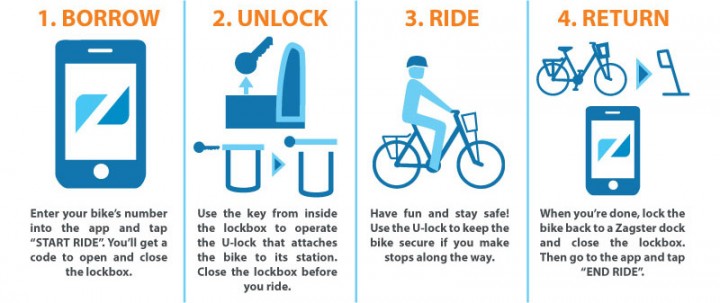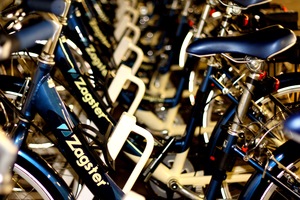
Carmel’s new bike sharing program has now started. City officials announced the official launch on April 14 for its partnership with the company Zagster.
How does it work?
For the initial launch, there will be two stations: Carmel City Center near the Monon and Main Street near the Monon. In total, there will be 16 bikes and 16 adult tricycles available to rent for $3 an hour and $24 for 24 hours. Customers can play monthly or annual fees for different rates.
You can only keep the bike out for 24 hours and after that there’s a late fee. David Littlejohn, alternative transportation coordinator for the city, said if a user fails to return a bike, then Zagster can contact them because everyone has to use a credit card to use the service. Littlejohn said Zagster tells them there’s never really been a problem with users not returning bikes.
Unlike the system in Indianapolis which was sponsored by the Indiana Pacers, Carmel’s system involves an app for a smartphone where users sign up, enter the number of the bike they wish to rent and tap “start ride.” That unlocks the bike from its rack and the user can ride around town, using an attached lock to secure the bike if necessary. Once the bike is returned to the rack, users then tap “end ride” on the app.
If users need help they can call 202-999-3924.
What does it cost the city?
Although Zagster is a private company, the city of Carmel still receives 93 percent of the revenue from this service. Instead of creating its own technology and system, the city entered into an agreement with the company to pay $1,320 per year per bike, along with a one-time set-up fee of $8,600, which includes two bike docks with automated locking systems, 16 adult bikes, the maintenance and the repositioning of the bikes and customer services.
Litteljohn said the overall initial contract with the Board of Public Works totaled at around $30,000.
But considering the annual cost of the bikes is around $110 each a month, then in theory each bike only needs one or two $3 hour rides a day to break even. Littlejohn said any extra revenue will be reinvested in the program.
“There are many opportunities to expand the program locally and regionally,” Littlejohn said. “The ultimate priority is to provide the initial service and if we can break even that will be great.”



